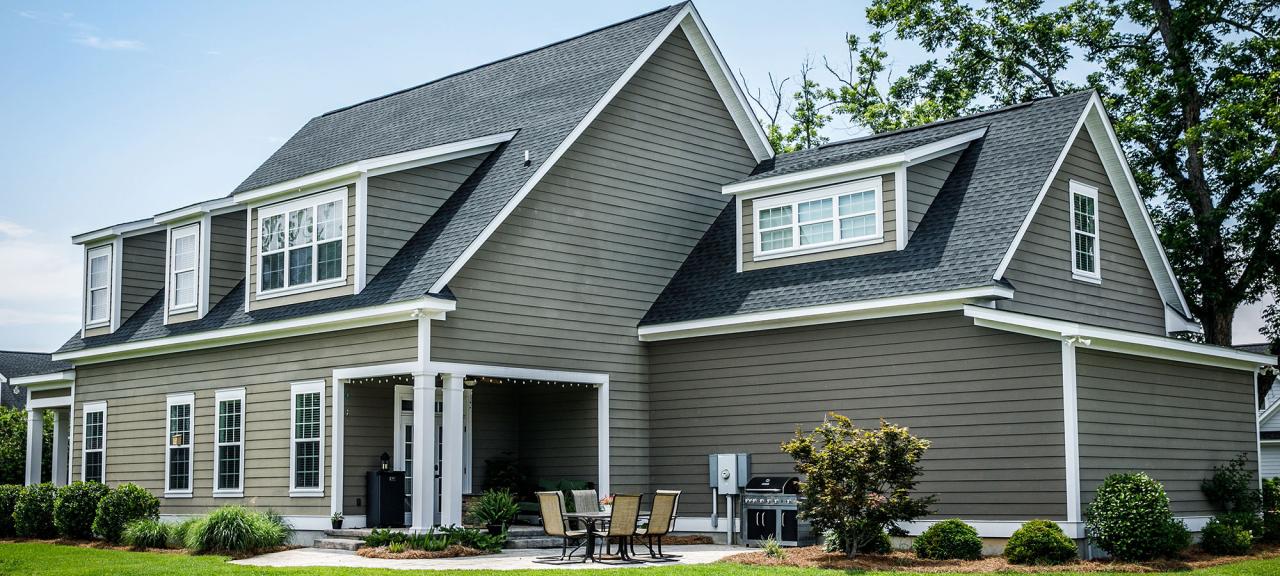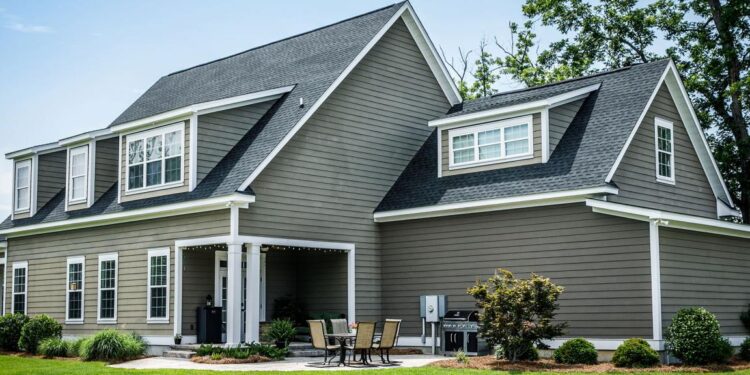Exploring the world of roofing and siding contractors unveils a plethora of options and considerations. From the types of materials used to maintenance tips and choosing the right contractor, this guide delves into the essentials of creating a durable and aesthetically pleasing exterior for your home.
Types of Roofing Materials

Roofing materials play a crucial role in protecting homes from the elements while also enhancing curb appeal. Contractors often use a variety of materials to meet the diverse needs of homeowners.
Asphalt Shingles
Asphalt shingles are one of the most popular roofing materials due to their affordability and ease of installation. They come in a wide range of colors and styles, making them a versatile choice for many homeowners. While asphalt shingles are durable and can last up to 20-30 years, they may require more frequent maintenance compared to other materials.
Metal Roofing
Metal roofing is known for its longevity and durability, with a lifespan of 40-70 years or more. This type of roofing is resistant to fire, mildew, insects, and rot, making it a low-maintenance option for homeowners. While metal roofing may have a higher upfront cost than asphalt shingles, its longevity and energy efficiency can result in long-term savings.
Eco-Friendly Roofing Options
For environmentally conscious homeowners, there are several eco-friendly roofing options available. One popular choice is a green roof, which consists of vegetation planted on a waterproof membrane. Green roofs help reduce energy costs, improve air quality, and provide additional insulation.
Another eco-friendly option is solar roofing, which incorporates solar panels into the roof to harness renewable energy and reduce electricity bills.
Siding Installation Techniques
Installing siding is an essential part of protecting and enhancing the exterior of a residential property. Here, we will discuss the process of installing vinyl siding, steps involved in replacing damaged siding, and the advantages of fiber cement siding over other materials.
Installing Vinyl Siding
- Prepare the surface by removing any existing siding and ensuring the exterior is clean and smooth.
- Measure and cut the vinyl siding panels to fit the dimensions of the walls.
- Start at the bottom of the wall and work your way up, overlapping each panel to provide proper coverage.
- Secure the panels in place using nails or screws, making sure to leave room for expansion and contraction.
- Finish off the installation with trim pieces around windows, doors, and corners for a polished look.
Replacing Damaged Siding
- Identify the damaged sections of siding and carefully remove them without causing further harm to the surrounding areas.
- Inspect the underlying structure for any signs of damage or moisture that may need to be addressed before installing new siding.
- Select replacement siding that matches the existing material and color to maintain a cohesive appearance.
- Install the new siding following the same process as for installing vinyl siding, ensuring a proper fit and secure attachment.
Advantages of Fiber Cement Siding
- Durability: Fiber cement siding is resistant to rot, fire, insects, and harsh weather conditions, making it a long-lasting option for homeowners.
- Low Maintenance: This type of siding requires minimal upkeep and can be easily cleaned with soap and water, reducing the need for frequent painting or repairs.
- Aesthetic Appeal: Fiber cement siding comes in a variety of styles and colors, allowing homeowners to achieve the look they desire for their property.
- Energy Efficiency: With proper insulation, fiber cement siding can help improve the energy efficiency of a home by reducing heat loss and lowering utility bills.
Roofing and Siding Maintenance
Maintaining your roof and siding is crucial to ensuring the longevity and structural integrity of your home. Regular maintenance can help prevent costly repairs and extend the lifespan of these essential components of your house.Identifying common roofing problems such as leaks or missing shingles is key to addressing issues before they escalate.
Look out for water stains on your ceiling, damp spots in your attic, or shingles that are curling, cracked, or missing. These signs indicate potential problems that need immediate attention.
Roof Maintenance Schedule
Regular inspections are essential for maintaining your siding. Inspect the condition of your siding at least once a year to check for any signs of damage, such as cracks, holes, or loose panels. Keeping your siding clean by washing it with a mild detergent and water can help prevent mold, mildew, and algae growth.
Identifying Common Siding Problems
Regular inspections are crucial for identifying common siding problems early on. Look out for signs of rot, warping, or discoloration, as these can indicate underlying issues that need to be addressed. Damaged or loose siding panels should be repaired or replaced promptly to prevent further damage to your home's exterior.
Choosing a Roofing and Siding Contractor
When it comes to selecting a reputable roofing and siding contractor for your home, there are several important factors to consider. From checking licenses and insurance to ensuring written estimates and contracts, taking the time to make a well-informed decision can save you time, money, and stress in the long run.
Checking Licenses and Insurance
It is crucial to verify that the roofing and siding contractor you are considering is properly licensed and insured. A valid license demonstrates that the contractor has met certain requirements and is authorized to perform the work in your area.
Additionally, insurance protects you as the homeowner in case of accidents or damage during the project. Always ask to see proof of both before hiring a contractor.
Written Estimates and Contracts
Before any work begins, it is essential to get written estimates from potential roofing and siding contractors. These estimates should Artikel the scope of work, materials to be used, and the total cost of the project. Once you have selected a contractor, be sure to have a detailed contract in place that includes timelines, payment schedules, and any warranties or guarantees.
Having everything in writing helps to avoid misunderstandings and ensures that both parties are clear on expectations.
Final Review
In conclusion, understanding the nuances of roofing and siding contractors is crucial for homeowners looking to enhance their property's longevity and curb appeal. By following the insights shared in this guide, you can navigate the process with confidence and make informed decisions every step of the way.
Query Resolution
What should homeowners consider when choosing roofing materials?
Homeowners should consider factors like durability, cost, and aesthetics when choosing roofing materials. It's essential to select a material that suits the climate and complements the overall design of the house.
How often should roof maintenance be performed?
Roof maintenance should be performed at least twice a year, ideally in spring and fall, to ensure any issues are caught early and addressed promptly.
Why is it important to hire a licensed and insured contractor?
Hiring a licensed and insured contractor provides homeowners with protection and ensures that the work is done according to industry standards. It also safeguards against liabilities in case of accidents or damages during the project.


